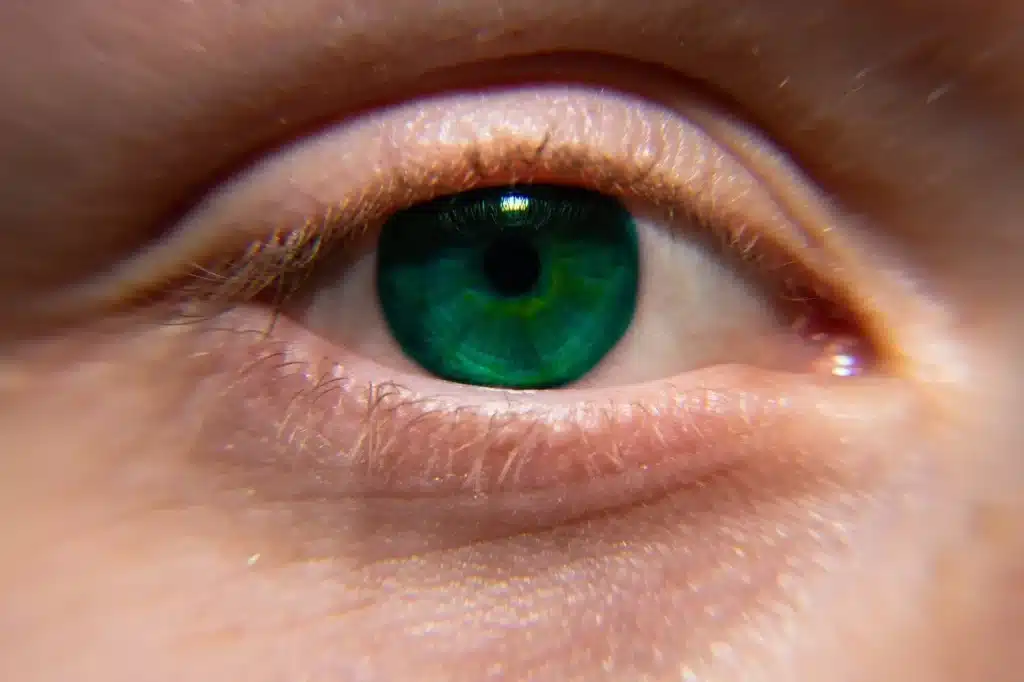The optic nerve plays a very important role in your vision. It’s the main line of communication between your eyes and brain. Light passes through your cornea and is focused into the retina, which turns that light into an electrical signal that travels through the optic nerve to the brain.
In the event your optic nerve is damaged in any way, you risk permanent vision loss, vision impairment, or even blindness. As you can likely imagine, this can cause a significant reduction in your quality of life and take away your ability to live a normal, happy, and healthy lifestyle.
Of all the things that could go wrong with the optic nerve, one of the most common is glaucoma. In fact, it’s the second leading cause of blindness behind cataracts and affects millions of people on a daily basis. Don’t worry, we’re going to detail everything you need to know about glaucoma.
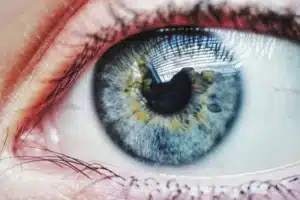
So, what is glaucoma?
Glaucoma is an eye condition that’s generally characterized by elevated eye pressure, also known as intraocular pressure. The increased pressure inside the eye is usually caused by a buildup of fluid called aqueous humor that doesn’t drain properly due to narrow drainage angles.
Since the aqueous fluid doesn’t drain properly, the buildup increases the pressure in your eye and can damage the optic nerve. The increased pressure doesn’t always come with symptoms, but a regular eye exam with an ophthalmologist can help detect glaucoma in its early stages.
Other causes of glaucoma include eye injury, eye infection, blocked blood vessels, eye surgery, and eye inflammation. People with glaucoma need immediate medical attention to lower the eye pressure and prevent the condition from worsening to the point of permanent vision loss.
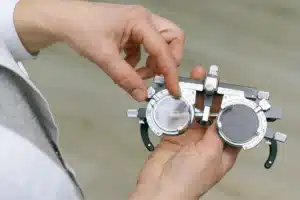
Different Types of Glaucoma
There are a number of different types of glaucoma. Determining the type of glaucoma that you’re suffering from is highly important to ensure you receive the right diagnosis and treatment. To do so, your doctor will perform a variety of tests to inspect the eye pressure and optic nerve.
The most prominent types of glaucoma are open-angle glaucoma, angle-closure glaucoma, secondary glaucoma, normal-tension glaucoma, pigmentary glaucoma, and congenital glaucoma. Below, we’re going to take a closer look at each one and what makes them different.
Primary Open-Angle Glaucoma
This is the most common type of glaucoma and is also known as wide-angle glaucoma. It occurs when the drainage system (trabecular meshwork) looks like it should be working fine, but doesn’t drain properly. It’s a silent condition that is usually met without signs or symptoms.
Angle-Closure Glaucoma
Angle-closure glaucoma has several different names — including acute angle-closure glaucoma, closed-angle glaucoma, narrow-angle glaucoma, and chronic angle-closure glaucoma. It’s when the eye doesn’t drain properly due to a narrow drainage channel between the iris and cornea.
Secondary Glaucoma
Secondary glaucoma is any form of glaucoma that’s caused by another condition — whether it be a condition of the eye or another physical condition in the body. For example, glaucoma caused by diabetes or cataracts would be considered secondary glaucoma.
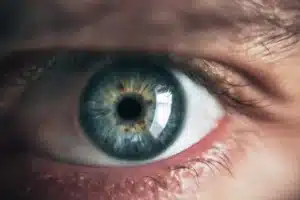
Normal-Tension Glaucoma
Normal-tension glaucoma occurs when the optic nerve is damaged, despite normal levels of intraocular pressure. This type of glaucoma is generally characterized by blind spots in your visual field.
Pigmentary Glaucoma
Pigmentary glaucoma occurs when pigment from your iris — the colored part of your eye — leaks into the fluid inside the eye — the aqueous humor. This clogs the drainage canal, which increases pressure inside the eye and causes damage to the optic nerve.
Congenital Glaucoma
Congenital glaucoma is also called childhood, infantile, or pediatric glaucoma. It’s when babies are born with drainage channels that don’t drain properly, which causes optic nerve damage at birth.
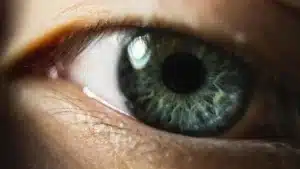
Common Glaucoma Symptoms & Glaucoma Risk Factors
Open-angle glaucoma is often labeled “sneak thief of sight” because there are generally no early symptoms or warning signs. This can be troublesome, considering how fast glaucoma develops in the eye. That’s why it’s important that you schedule a regular eye exam with your eye doctor.
While open-angle glaucoma symptoms usually don’t present themselves, there are several symptoms of angle-closure glaucoma, including:
- Seeing halos or rings around lights
- Vision loss or poor peripheral vision (tunnel vision)
- Redness in the eye
- Hazy-looking eyes
- Severe eye pain
- Nausea and headaches
- Blind spots or blurred vision
In addition to that, there are several conditions and risk factors that can increase your risk of developing glaucoma, which includes:
- Having a family history of glaucoma
- Being over the age of 40
- Being of African, Hispanic, or Asian heritage
- High eye pressure
- High blood pressure
- Myopia or hyperopia
- Eye injury
- Poor blood circulation
- Thinning of the cornea or optic nerve
- Diabetes
- Frequent migraines
- Taking certain steroid medications
If you’re experiencing any of these symptoms, believe you are at risk of developing glaucoma or haven’t had a comprehensive eye exam in a while, now is the perfect time to schedule an eye exam with your local ophthalmologist. It’s vital to maintaining proper eye health and function.

How to Diagnose Glaucoma & Treatment Options
A glaucoma diagnosis is usually accomplished with a dilated eye exam that measures eye pressure, inspects the drainage angle, examines the optic nerve, tests peripheral vision, measures corneal thickness, and measures the optic nerve (sometimes with a photo).
Regular eye exams and a visual field test are necessary for early detection of glaucoma, especially with open-angle glaucoma. If caught in its early stages, your ophthalmologist will recommend a treatment plan depending on the type of glaucoma you’re suffering from.
Some of the most prominent ways to treat glaucoma (or prevent glaucoma from worsening) are a combination of prescription eye drops, oral glaucoma medications, and laser treatment or eye surgery (trabeculoplasty, iridotomy, cyclophotocoagulation, or trabeculectomy).

Contact Milwaukee Eye Surgeons Today!
Have you been procrastinating a visit to the eye doctor for quite some time? Are you worried your eye health isn’t where it should be? Do you believe you might be at risk of experiencing glaucoma? Don’t worry, Milwaukee Eye Surgeons has the equipment and knowledge to help!
Contact us today to schedule a regular eye exam so we can detect, diagnose, and eventually treat any eye condition you’re currently dealing with. We can’t wait to help you feel a little more secure with improved vision and better eye health.

